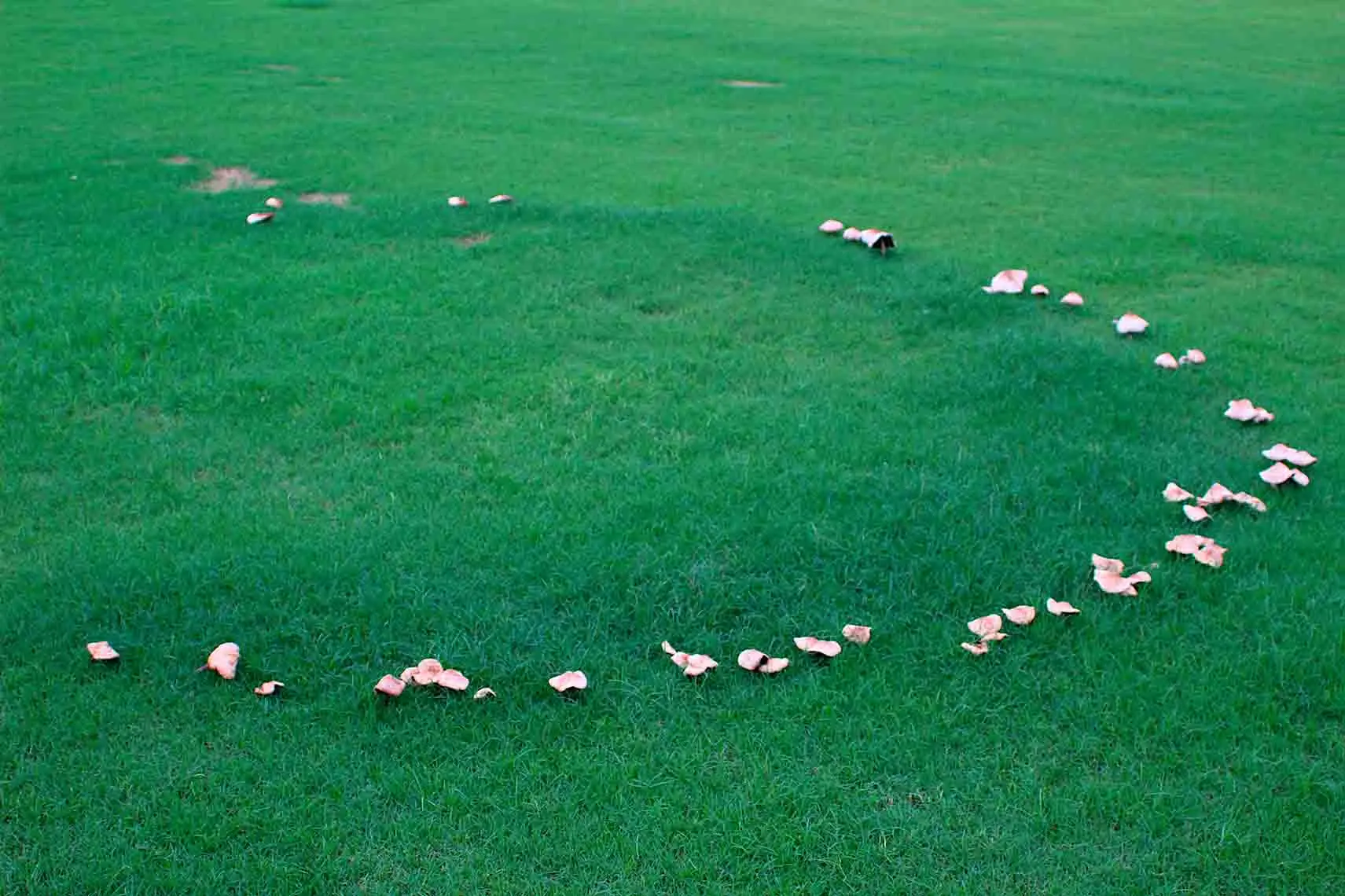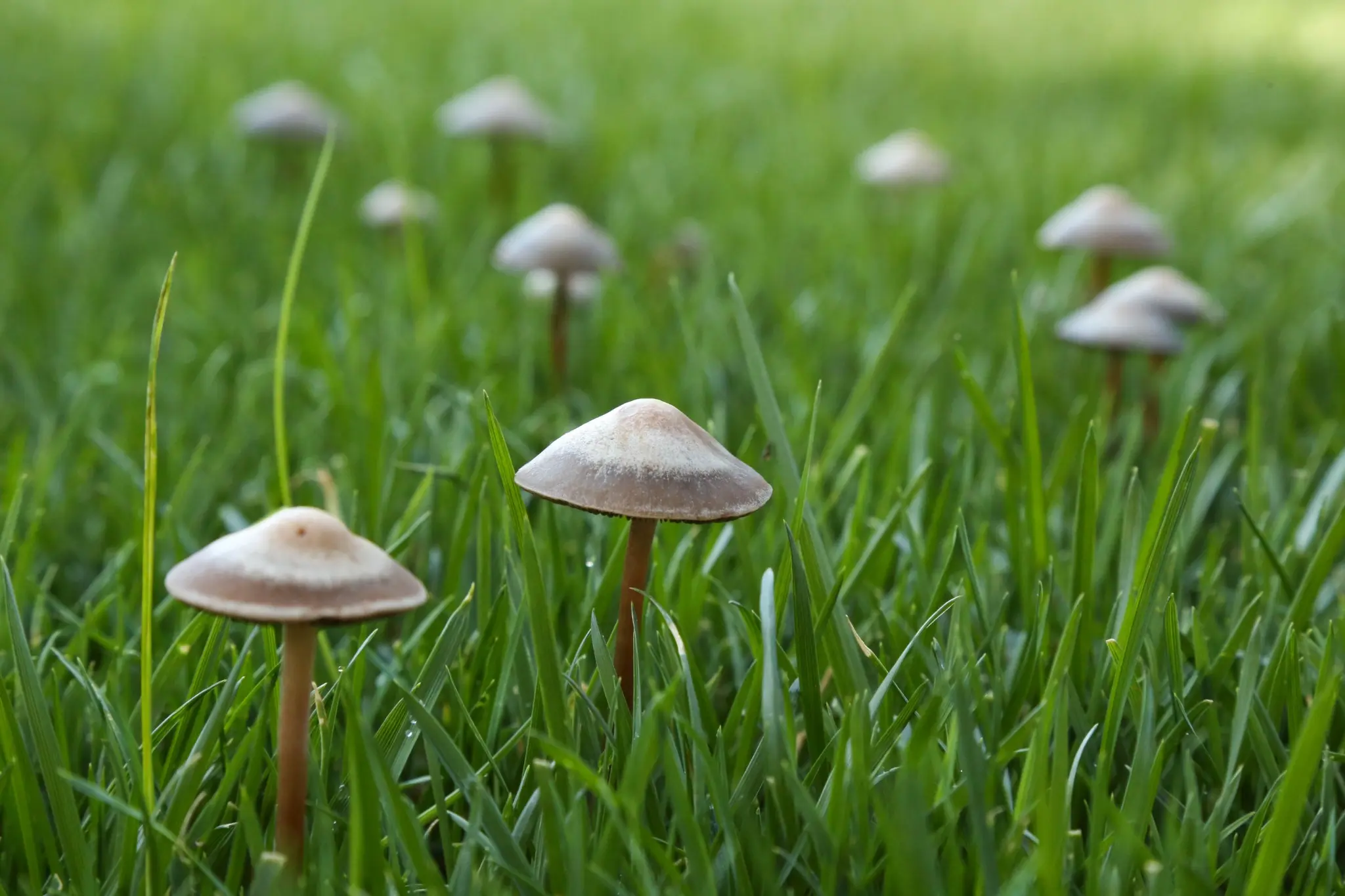Mushrooms. They pop up overnight. They gather in fairy rings, huddle in shady corners, or boldly erupt from the middle of your lawn. And they spark just as many questions as they do curiosity: What are these mushrooms doing here? Are they dangerous? Can I get rid of them? Are any of them edible? (And should I even try?)
At Be Green Pro, we field a lot of mushroom-related questions, especially in the spring and fall when conditions are just right for fungi to flourish. Here’s everything you need to know to feel confident when mushrooms show up in your lawn.

Mushrooms are the fruiting bodies of fungi that live beneath the soil. Their presence is usually a sign of organic material decomposing in your lawn—things like buried wood, dead tree roots, mulch, or even thatch.
In many cases, they’re not a problem at all. In fact, mushrooms are often a sign that your soil has good biological activity. But too much of a good thing (like excess moisture or poor airflow) can lead to a mushroom takeover.
Common causes include:

Most mushrooms you see in the lawn are harmless, especially if you're not eating them. However, it’s smart to play it safe:

While most mushrooms are natural decomposers, some fungi are signs of turf disease:
Be Green Pro offers low-toxicity and organic treatment options for fungal diseases that help your lawn recover without harming the environment.

You can’t completely prevent mushrooms—and that’s okay. But if they bother you or keep coming back, you have a few options:
Yes. For lawns with persistent mushroom issues due to turf disease or excess moisture, we can apply targeted fungicide treatments or develop a tailored soil health plan. However, it’s important to treat the cause—not just the symptoms.
Here’s where things get fun and risky. Some wild mushrooms, like morels or puffballs, are edible when harvested fresh and correctly identified. But misidentifying mushrooms can be dangerous or even deadly.
Our tip: Never eat a mushroom unless you are 100% certain of its identity.
Morel mushrooms are a prized wild edible that show up in spring in wooded or shaded areas. They are NOT likely to be found in well-kept suburban lawns, but people often get excited when they think they spot one.
Morels have a distinct honeycomb texture, but beware of false morels, which can be toxic. If you're lucky enough to forage real ones, congrats! (And yes, they are delicious sauteed in butter or olive oil with a pinch of salt.)
If you see small, white balls that resemble mini marshmallows, you might have puffball mushrooms. Some puffballs are edible when very young and firm (they should be solid white inside with no gills or dark spots), but others are easily confused with toxic lookalikes.
Puffball Test Tip: Cut one in half. If it's pure white and has a texture like a marshmallow or mozzarella ball, it might be safe. If you see anything else—discard it. When in doubt, leave it be or consult a local expert.
If you’re 100% sure you’ve got edible puffballs, try this simple Wisconsin-style recipe:
Puffball Parmesan Bites
Instructions:
Note: Always consult a mushroom expert or forager before consuming wild mushrooms.
Small puffballs (smaller than a baseball) are edible if they are solid white inside with no gills. Slice, saute in garlic butter with a dash of salt and thyme, and serve over toast or pasta. Always verify ID before consuming any wild mushroom.
Preventing Mushrooms (Without Harsh Chemicals)
Be Green Pro Can Help
Whether you have mystery mushrooms, turf disease, or just want a healthier lawn without harsh chemicals, we’re here to help. Our eco-friendly solutions, including microbial aeration, fungal treatment, and soil amendments, support the health of your lawn naturally.
Let’s Keep It Curious
Mushrooms are one of nature’s strangest guests, some are very beautiful, and some can cause you to pause. Most are harmless, many are helpful, and a few need extra attention. Have questions? Snap a photo and send it our way—we’re happy to take a look.
Need help with a mushroom mystery or turf concern? Contact Be Green Pro today and let’s grow greener together.